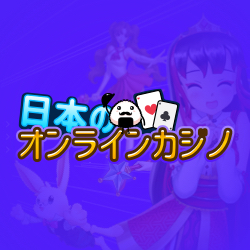Darksiders II Xbox 360 Review
Publisher – THQ – Developer – Vigil Games – Genre – Action RPG – Players – 1 – Age Rating – 15+ – Other console/handheld formats – PS3
The original Darksiders flirted with RPG facets, but was far from being a fully fledged RPG. Conversely, its sequel Darksiders II fully embraces the genre, which in turn transforms it into a very different game from its predecessor.
The first game was like the result of a strange entwining between The Legend of Zelda and God of War, and comparisons with those games still stand for the sequel. You’ll still travel through huge multi-layered dungeons, solving puzzles and taking on enemies in ferocious combat, but not as War this time around, but as his more frightening masked brother, fellow Horseman of the Apocalypse, Death.
What is sure to be a disappointment to some that played the original game and witnessed its exciting conclusion is that, in terms of timeline, Darksiders II takes place in tandem with the events of its predecessor as Death attempts to clear War’s name after he’s accused of the little thing of bringing about the total destruction of humanity. Like the first game, its narrative is not one of its strong elements and is somewhat difficult to keep track of.
With four sizable hub worlds, this time around the world is substantially bigger and, to travel more quickly around it, Death can hop on to his trusty steed, Despair, which will no doubt please those that were disappointed in the first game for the fact that, despite playing as a horseman of the apocalypse, there was very little horse riding to be done throughout the game.
The dungeons are well constructed in their design, though rarely as intricately clever and beautifully designed as the Zelda series has managed at a consistent rate for over 25 years. Solving many of the puzzles and being rewarded with a Zelda like chime rarely offers quite the same sense of satisfaction that entries in Nintendo’s legendary series often do, though some situations towards the end are devious enough to offer satisfaction upon discovering their solutions.
Much like Nintendo’s excellent franchise, puzzles often require the use of items and abilities to solve them such as bombs to destroy certain areas and a hook claw which allows Death to travel further. More unique is the ability for Death to disconnect the soul from his body, giving you two of the horseman to take charge of independently from one another. There’s some relatively clever puzzles in relation to this ability.
There’s an increased focus on platforming and rather than being unique, instead recalls another well loved gaming series, this time Prince of Persia. Death’s vast frame belies his ability to perform parkour but he can do so to an impressive level, allowing you to run along walls. Platforming rarely requires much in the way of skill and isn’t as precise or doesn’t look as fancy as the likes of Prince of Persia and Assassin’s Creed manage, though it still very much adds a welcome new dimension to the dungeon exploration.
The combat system meanwhile, whilst still relatively simple and rough in comparison to the likes of Devil May Cry and Bayonetta, still manages to be enjoyable and offers more possibilities than its predecessor with a more extensive range of combo strings available. Death has two weapons as well as magical attacks, which you’re able to work into various combinations. He also has magical abilities, allowing you to do such things as summon demons or increase your strength.
Defeating enemies and completing quests will see you earn experience, eventually levelling you up and rewarding you a skill point to spend on a new ability or enhancement in one of two skill trees.
RPG elements are further expanded with a loot system, which sees new equipment rewarded with nearly every chest opened and occasionally through defeating enemies. RPG fans will no doubt spend a great deal of time in the inventory, poring over stats to determine the best set of equipment for their play style. The opportunity of constantly finding new loot is a consistently exciting and absorbing prospect throughout the game, which will never go away for people of a certain disposition.
Darksiders II is somewhat of a rare sequel in the fact that, whilst it’s only the second entry, it’s already taken the series in a fresh direction, though much like the original game, every mechanic recalls other games and, whilst its inspirations largely pull off the things that the game borrows from them in a more tidy manner, everything is still perfectly adequate and it’s those disparate elements in amalgamation that makes Darksiders II into the wonderful game that it is and ultimately a sequel that is superior in almost every way imaginable over its predecessor.
9/10









